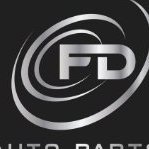-
Welcome to Auto Parts Forum
Whether you are a veteran automotive parts guru or just someone looking for some quick auto parts advice, register today and start a new topic in our forum. Registration is free and you can even sign up with social network platforms such as Facebook, X, and LinkedIn.
Classification of engines
-
Similar Content
-
My Experience with AutoParts.co.ua - Highly Recommend!
By John Dow,
- auto parts
- autopartsshop
- (and 1 more)
- 0 replies
- 123 views
-
- 0 replies
- 426 views
-
Understanding Auto Spare Parts: The Backbone of Vehicle Maintenance
By Muhammad,
- auto parts
- automotive
- (and 3 more)
- 0 replies
- 242 views
-
- 0 replies
- 692 views
-
- 1 reply
- 1,118 views
-
-
Similar Topics
-
By Swizz Auto
Swizz Auto is a trusted auto parts provider in the US. We provide you with quality-tested inventories to get you the right fitment for the car’s make and model. Also, when you reach our portal, you can find link hidden, please login to view near me using the online locator tool. If you see challenges in finding the relevant information, you only need to provide us with the make and model no. Discuss them with our reps if you are concerned about warranty and shipping.
-
By Dorman Products
The best oil filter housing upgrade for Pentastar engines | Dorman’s patented OE FIX™ 926-959
-
By Dorman Products
The best oil filter housing upgrade for Pentastar engines | Dorman’s patented OE FIX™ 926-959
-
By Mike James
Buy auto car spare parts.
link hidden, please login to view
Shop Engines at a discount prices from the best engine catalog online.
link hidden, please login to view
Browse our huge selection of Genuine & OEM BMW parts and accessories.
link hidden, please login to view
Buy Toyota spare parts. Toyota Sales we stock Toyota Genuine Parts designed specifically for your vehicle.
Whether you are looking for wiper blades for your Toyota at.
link hidden, please login to view
Buy Mcerdes Benz parts and assessories at auto spareparts at a discounts.
link hidden, please login to view
Contact; (405)283-2648
-
-
By Counterman
There are many ways that a vehicle tries to tell you when there’s something wrong – some of them subtle, some of them not so subtle.
A “Check Engine” light or other malfunction indicator light is a clear signal that there’s an issue that needs to be addressed.
However, other clues – such as an unusual sound, smell or vibration – can be much harder to interpret, depending on the owner’s knowledge and understanding of automotive systems and diagnostics.
For many drivers, it’s tempting to ignore these clues and hope the issue goes away – or pray that the vehicle will remain drivable until they have the time (or money) to take it to a repair shop.
When an engine overheats, hoping and praying go out the window.
An overheated engine is a blatant indication that something is seriously wrong. At the risk of being melodramatic, it’s a cry for help from the engine – often the result of cues (such as that puddle of coolant in the driveway) that were missed or ignored. That cry for help usually comes in the form of steam emanating from under the hood; the temperature gauge indicating that the engine is running hot; and/or a noticeable smell coming from the engine.
As for the causes of an overheated engine, let’s round up some of the usual suspects.
Coolant Leak
As the name implies, coolant helps maintain a consistent temperature that won’t overheat components such as the cylinder head. According to Prestone, coolant touches 17 essential parts of an engine. Not surprisingly, a coolant leak is a primary cause of engine overheating.
A bad head gasket can result in coolant leaking into the combustion chamber or onto the ground.
A cracked or corroded radiator can allow coolant to seep or stream out if the leak gets bad enough.
As rubber coolant hoses get old, they can get hard and brittle, creating small cracks that let coolant escape.
Coolant leaks also can occur at the water-pump-shaft seal, coolant reservoir or heater core.
Restricted coolant flow is another potential culprit. Buildup of mineral deposits and other debris in the radiator can dramatically reduce the ability of the cooling system to do its job. Likewise, buildup in the hoses can slow the flow of coolant, leading to reduced cooling and even clogs in the system from loose corrosion. When coolant flow is restricted, it’s a recipe for overheating.
What can you do to help prevent these situations? Make sure you’re encouraging your customers to follow the vehicle’s recommended flush-and-fill schedule, and to always use the coolant specified by the vehicle manufacturer.
Bad Thermostat
The thermostat regulates the coolant temperature to keep it consistent for efficient engine operation. A conventional thermostat reacts to changes in the coolant temperature based on the status of the wax inside it. When the wax melts, a spring pushes the valve open and coolant flows. When the coolant drops in temperature, the wax solidifies, and the valve closes.
If the thermostat gets stuck in the closed position, coolant won’t pass through the radiator, and the engine becomes overheated. Conversely, when the thermostat is stuck in the open position, the continuous circulation of coolant can lead to a condition known as overcooling. Both scenarios are bad news for an engine.
Water Pump
Since water pumps move such a vast amount of coolant through the cooling system (something like seven gallons of coolant during a driven mile), it stands to reason that a failed water pump will cause the engine to overheat. Without a properly functioning water pump, the cooling system can’t maintain the pressure needed to push coolant to vital engine parts.
One of the biggest causes of water-pump failure is the result of leaks, either around the shaft or from a worn bearing or seal. Debris can enter the system and score the shaft seal, creating a leak path.
Cavitation – tiny bubbles of super-heated vapor inside the water pump – also can cause damage and leaks. Worn belts or tensioners are another potential culprit. A loose belt might not allow the pump to rotate as fast as it should, which then causes the engine to overheat.
Parting Thoughts
Cooling systems in modern vehicles are evolving. We’re seeing new twists on traditional concepts – electronically controlled thermostats, for example – and we’re seeing entirely new components, such as active grille shutters.
Still, the basic premise hasn’t changed. Cooling systems manage the heat produced by the engine. If the system can’t maintain the pressure needed to circulate coolant, the engine will overheat.
The post
link hidden, please login to view appeared first on link hidden, please login to view.
link hidden, please login to view
-







Recommended Posts
Join the conversation
You can post now and register later. If you have an account, sign in now to post with your account.
Note: Your post will require moderator approval before it will be visible.